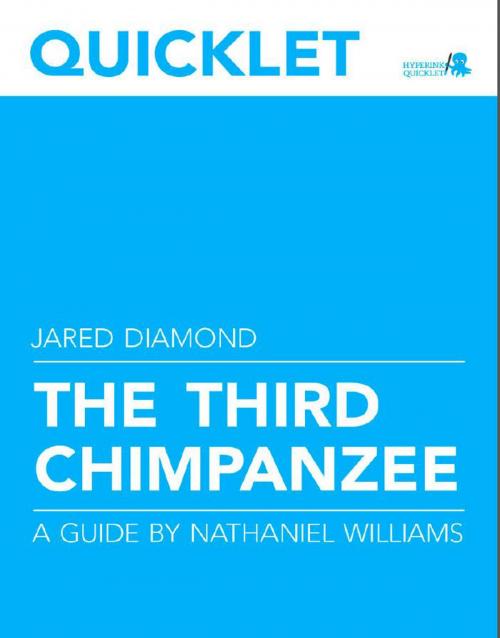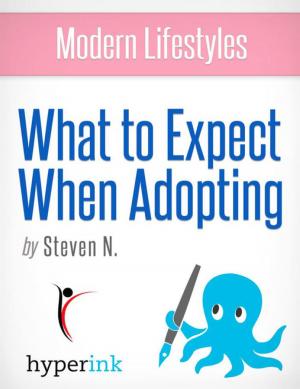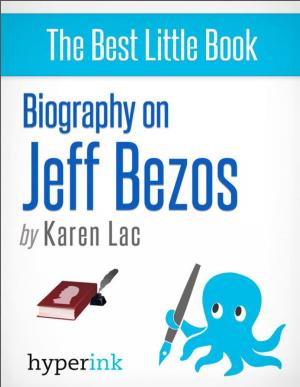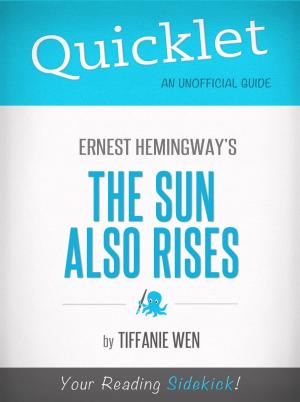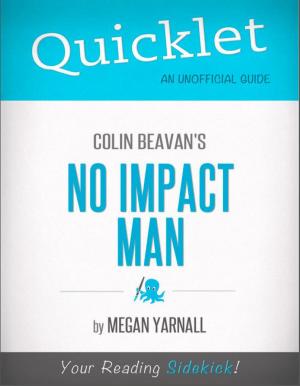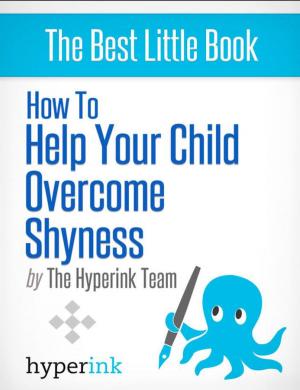Quicklet on Jared Diamond's The Third Chimpanzee (CliffNotes-like Book Summary and Analysis)
Nonfiction, Reference & Language, Study Aids, Book Notes, Art & Architecture, General Art| Author: | Nathaniel Williams | ISBN: | 9781614646464 |
| Publisher: | Hyperink | Publication: | July 30, 2012 |
| Imprint: | Hyperink | Language: | English |
| Author: | Nathaniel Williams |
| ISBN: | 9781614646464 |
| Publisher: | Hyperink |
| Publication: | July 30, 2012 |
| Imprint: | Hyperink |
| Language: | English |
ABOUT THE BOOK
At present we make a fundamental distinction between animals (including apes) and humans, and this distinction guides our ethical code and actions. For instance, as I noted at the start of this chapter, it is considered acceptable to exhibit caged apes in zoos, but it is not acceptable to do the same with humans. I wonder how the public will feel when the identifying label on the chimp cage in the zoo reads 'Homo troglodytes'.
The Third Chimpanzee is inspired by the latest genetic data on the close relation of humans and chimpanzees to look at humankind’s place in the world afresh. Author Jared Diamond, a trained physiologist, offers provocative questions to the lay audience on human behavior, morality, environmental policy, and politics.
Diamond would return to these issues again in later, more successful books (Guns, Germs, and Steel; Collapse), but this work is the most grounded and least speculative of his best-sellers.
EXCERPT FROM THE BOOK
He speculates on art’s function and concludes that it is primarily to attract mates, increase status, and, occasionally, kill boredom.
Diamond is well out of his area of expertise in this chapter and fails to convince the reader of his hypotheses for artistic function. If the book’s purpose is, smartly, to show how similar humans are to chimps and to examine the key differences, why cite examples of artistic behavior in birds and elephants? Why not examine art among our fellow apes? Apparently apes in the wild exhibit little interest in artistic expression, which would make it a very short chapter. But the sexual motivation for art among birds is hardly cause to believe there is a similar cause among humans. Indeed, many of the great historical works of art were decidedly religious in nature. It would take a true cynic to believe Michelangelo painted the Sistine Chapel ceiling to better increase his chances of sexual conquest.
“Agriculture’s Two-Edged Sword”
Unlike complex language, agriculture is not a distinct dividing line between humans and other animals. After all, many human societies did not adopt agriculture until the 20th century, and a small number today still live as hunter-gatherers. However, as Diamond points out, it is difficult to imagine a single innovation that transformed our relationship with the rest of the planet more than agriculture. Diamond explores interesting research on the early stages of agriculture that showed how adopting an agricultural lifestyle actually diminished the quality and length of human life. With less diverse nutrition, people become smaller and weaker, with greater propensity for bone disease. This innovation made individuals lives worse, while making their larger society more powerful.
Diamond returns to his larger theme with a compelling chapter that presages his later best-seller Guns, Germs, and Steel. Examining this historical development through a medical and biological lens, we are jarred from the traditional sense of linear historical progress and allowed to explore this cataclysmic shift in lifestyle with uncommon immediacy...
Buy the book to continue reading!
Follow @hyperink on Twitter!
Visit us at www.facebook.com/hyperink!
Go to www.hyperink.com to join our newsletter and get awesome freebies!
CHAPTER OUTLINE
Quicklet on Jared Diamond's The Third Chimpanzee
+ About the Book
+ Introducing the Author
+ An Overall Summary
+ Key Terms and Definitions
+ ...and much more
ABOUT THE BOOK
At present we make a fundamental distinction between animals (including apes) and humans, and this distinction guides our ethical code and actions. For instance, as I noted at the start of this chapter, it is considered acceptable to exhibit caged apes in zoos, but it is not acceptable to do the same with humans. I wonder how the public will feel when the identifying label on the chimp cage in the zoo reads 'Homo troglodytes'.
The Third Chimpanzee is inspired by the latest genetic data on the close relation of humans and chimpanzees to look at humankind’s place in the world afresh. Author Jared Diamond, a trained physiologist, offers provocative questions to the lay audience on human behavior, morality, environmental policy, and politics.
Diamond would return to these issues again in later, more successful books (Guns, Germs, and Steel; Collapse), but this work is the most grounded and least speculative of his best-sellers.
EXCERPT FROM THE BOOK
He speculates on art’s function and concludes that it is primarily to attract mates, increase status, and, occasionally, kill boredom.
Diamond is well out of his area of expertise in this chapter and fails to convince the reader of his hypotheses for artistic function. If the book’s purpose is, smartly, to show how similar humans are to chimps and to examine the key differences, why cite examples of artistic behavior in birds and elephants? Why not examine art among our fellow apes? Apparently apes in the wild exhibit little interest in artistic expression, which would make it a very short chapter. But the sexual motivation for art among birds is hardly cause to believe there is a similar cause among humans. Indeed, many of the great historical works of art were decidedly religious in nature. It would take a true cynic to believe Michelangelo painted the Sistine Chapel ceiling to better increase his chances of sexual conquest.
“Agriculture’s Two-Edged Sword”
Unlike complex language, agriculture is not a distinct dividing line between humans and other animals. After all, many human societies did not adopt agriculture until the 20th century, and a small number today still live as hunter-gatherers. However, as Diamond points out, it is difficult to imagine a single innovation that transformed our relationship with the rest of the planet more than agriculture. Diamond explores interesting research on the early stages of agriculture that showed how adopting an agricultural lifestyle actually diminished the quality and length of human life. With less diverse nutrition, people become smaller and weaker, with greater propensity for bone disease. This innovation made individuals lives worse, while making their larger society more powerful.
Diamond returns to his larger theme with a compelling chapter that presages his later best-seller Guns, Germs, and Steel. Examining this historical development through a medical and biological lens, we are jarred from the traditional sense of linear historical progress and allowed to explore this cataclysmic shift in lifestyle with uncommon immediacy...
Buy the book to continue reading!
Follow @hyperink on Twitter!
Visit us at www.facebook.com/hyperink!
Go to www.hyperink.com to join our newsletter and get awesome freebies!
CHAPTER OUTLINE
Quicklet on Jared Diamond's The Third Chimpanzee
+ About the Book
+ Introducing the Author
+ An Overall Summary
+ Key Terms and Definitions
+ ...and much more
